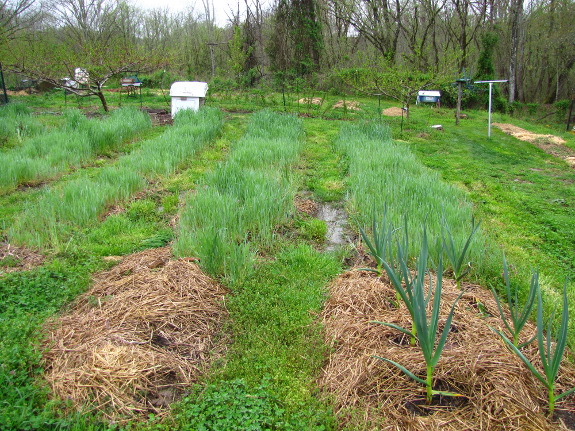
Rye cover crop in the spring

Around the beginning of
April, I started stressing about our rye
cover crop.
I'd seeded quite a few beds in rye last fall, figuring the plants would
have time to bloom and then be mowed down before vegetables needed to
be planted there in late May or early June. But the late-seeded
rye didn't get much more than three inches tall over the winter, and
despite other people's claims that the species grows on warm days, our
plants mostly sat there.
Then, suddenly, the rye
got its feet under it and started to grow. The plants seemed to
be measurably taller every day, with the happiest beds nearing two feet
tall already. Even in the troubled soil of the sodden back garden
(pictured above), rye seems to be producing demonstrable biomass.
The real question is ---
will the rye bloom and die on schedule? Only time will tell, but
I feel better about the experiment now that growth is finally happening.
Want more in-depth information? Browse through our books.
Or explore more posts by date or by subject.
About us: Anna Hess and Mark Hamilton spent over a decade living self-sufficiently in the mountains of Virginia before moving north to start over from scratch in the foothills of Ohio. They've experimented with permaculture, no-till gardening, trailersteading, home-based microbusinesses and much more, writing about their adventures in both blogs and books.
Want to be notified when new comments are posted on this page? Click on the RSS button after you add a comment to subscribe to the comment feed, or simply check the box beside "email replies to me" while writing your comment.

We are closer to the coast than you and thus saw more growth in our rye than what you are mentioning. My problem was that I needed the space sooner than later so we cut ours in before it actually bloomed. It did a great job of "cover cropping" and we had no noticeable cool season weeds (henbit is bad here). I will have to plan better in its use this fall so I can give it longer to mature.
I already have buckwheat sprouting in areas I need to lighten the soil. I just bought a 50 pound bag to use throughout the summer.